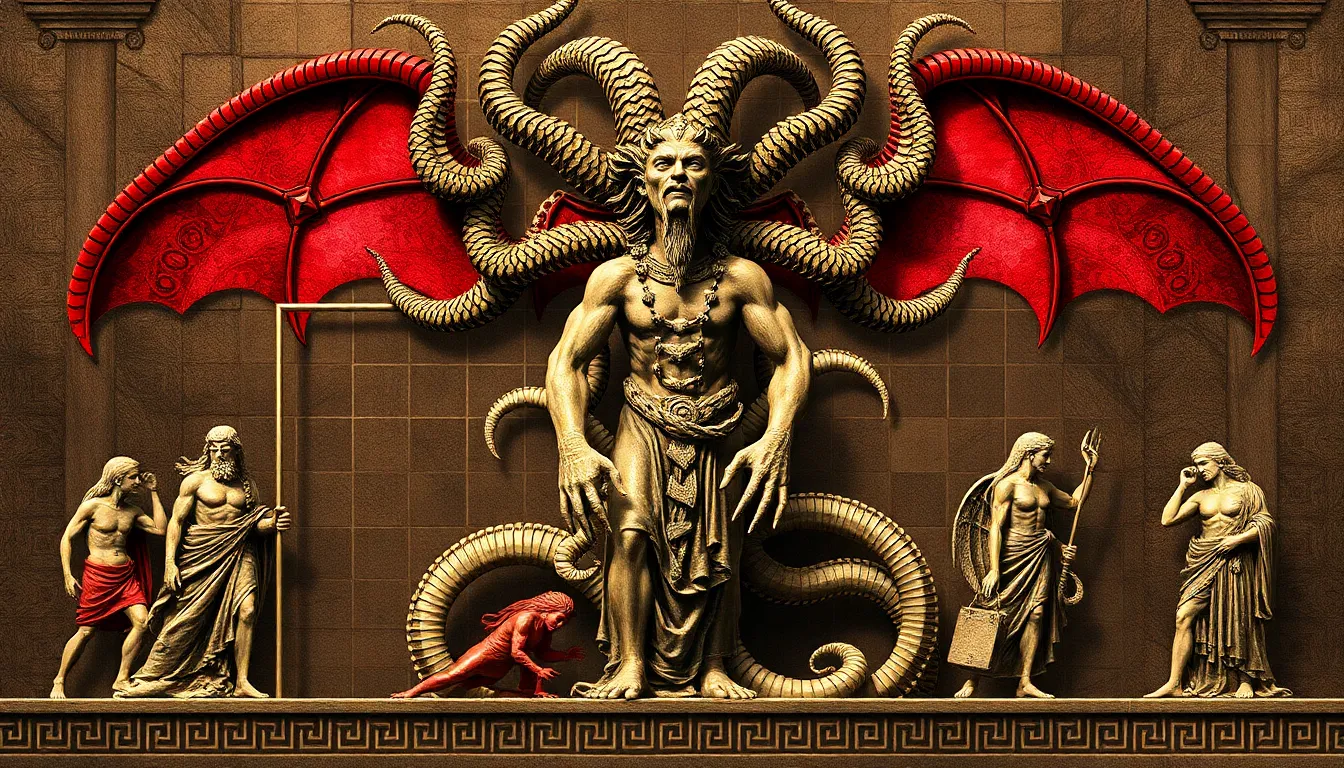The Gorgon’s Place in the Greek Mythological Family Tree
I. Introduction to Greek Mythology
Greek mythology is a rich tapestry of stories, characters, and themes that have profoundly influenced Western literature and culture. These myths explain natural phenomena, human behavior, and the origins of the world, often personified through gods, goddesses, and mythical creatures.
Among these creatures are the Gorgons, a trio of fearsome sisters whose tales weave through the fabric of Greek mythology. Understanding the Gorgons requires an exploration of the mythological family tree, which helps to contextualize their origins, relationships, and significance.
II. Defining the Gorgons
The Gorgons are often depicted as monstrous beings with hair made of living snakes and a gaze that turns those who look at them into stone. They embody dualities of beauty and horror, representing the darker aspects of femininity in mythology.
There are three primary Gorgons:
- Medusa: The most famous of the Gorgons, Medusa is unique among her sisters for being mortal. Her tragic story involves being cursed by Athena, transforming her from a beautiful maiden into a monster.
- Stheno: One of the immortal Gorgons, Stheno is known for her incredible strength and ferocity. She is often depicted as more aggressive than her sisters.
- Euryale: Also immortal, Euryale is noted for her terrifying appearance and mournful cries. She shares the same monstrous traits as her sisters but is less frequently mentioned in myths.
III. The Origins of the Gorgons
The Gorgons are the offspring of Phorcys and Ceto, primordial deities of the sea. Phorcys, often associated with the hidden dangers of the ocean, and Ceto, linked to the dangers of the deep, represent the chaotic forces of nature, which can be both life-giving and destructive.
This lineage places the Gorgons within a broader context of Greek mythology, emphasizing their connection to ancient fears and the unpredictable elements of the sea. As children of these primordial beings, the Gorgons symbolize the terrifying aspects of nature that humanity must confront.
IV. The Gorgons in Myth and Legend
Medusa, in particular, is at the center of several important myths. One of the most notable stories involves her encounter with Perseus, a demigod hero. Perseus is sent on a quest to behead Medusa, whose gaze can petrify even the bravest of warriors.
Other significant myths include:
- The transformation of Medusa from a beautiful priestess of Athena into a Gorgon as punishment for her defilement of the temple.
- The role of the Gorgons in the myth of the Argonauts, where they are encountered during the heroes’ quest for the Golden Fleece.
The Gorgons’ powers, particularly Medusa’s ability to petrify her foes, serve as a metaphor for the dangers of unchecked desire and the consequences of transgression. They represent both a threat and a cautionary tale about the allure of beauty intertwined with peril.
V. The Gorgon’s Role in the Larger Mythological Family
The Gorgons are intricately connected to other significant figures in Greek mythology, notably:
- Perseus: As the hero who confronts Medusa, his story is pivotal in the Gorgon narrative. His quest to slay Medusa is a classic hero’s journey, highlighting themes of bravery and cunning.
- Athena: The goddess of wisdom and war plays a crucial role in Medusa’s myth. After Medusa’s transformation, Athena later uses Medusa’s head as a protective amulet, known as the Aegis.
The Gorgons’ influence on heroes and deities underscores their importance in the mythological landscape, serving as both adversaries and tools in the hands of the gods and mortals alike.
VI. Symbolism and Cultural Interpretations of the Gorgons
The Gorgon, particularly Medusa, is rich in symbolism. She represents:
- Protection: In ancient times, images of Medusa were often used as protective amulets, warding off evil.
- Danger: The Gorgons embody the inherent dangers of beauty and seduction, cautioning against the consequences of desire.
Throughout history, artistic representations of the Gorgons have evolved. From ancient pottery to Renaissance paintings, they have been depicted in various ways, reflecting changing societal attitudes towards femininity, power, and monstrosity.
VII. The Gorgons in Modern Culture
Today, the Gorgons continue to captivate audiences through contemporary literature, cinema, and art. They often serve as symbols of female rage, empowerment, and the complexities of beauty.
Examples include:
- Films like “Clash of the Titans” and “Percy Jackson & the Olympians,” which reimagine the Gorgon myth for modern viewers.
- Literary works that explore themes of identity and transformation through the lens of the Gorgon myth, often reinterpreting Medusa as a figure of empowerment rather than merely a monster.
The enduring legacy of the Gorgons in popular culture highlights their adaptability and the timeless nature of their stories as they resonate with contemporary audiences.
VIII. Conclusion
In summary, the Gorgons hold a significant place in Greek mythology, embodying themes of danger, beauty, and transformation. Their connections to other mythological figures and their roles in key narratives illustrate their importance within the mythological family tree.
As symbols of both fear and protection, the Gorgons continue to influence modern culture, reminding us of the enduring power of myth and the lessons it imparts. Their stories are not just relics of the past but vibrant narratives that remain relevant in today’s world.




